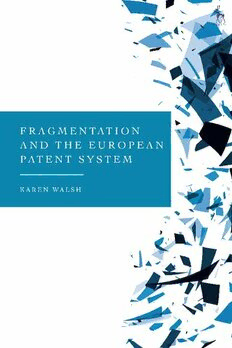
Fragmentation and the European Patent System PDF
237 Pages·2022·3.707 MB·English
Most books are stored in the elastic cloud where traffic is expensive. For this reason, we have a limit on daily download.
Preview Fragmentation and the European Patent System
Description:
This book provides an in-depth study on current perceptions of, and responses to, fragmentation in the European patent system (EPS). For decades, attempts have been made to address this fragmentation by introducing a unitary patent system. The most recent attempt, the EU unitary patent system, will be the first of its kind. It is expected to significantly change the EPS. However, rather than reducing existing fragmentation, it will likely add to it.Based on an analysis of the current and forthcoming systems, the book argues that the inherent nature of fragmentation within the EPS needs to be recognised and suggests that a multi-faceted approach is required to respond to it. Uniquely, it draws on work regarding fragmentation outside of the patent and intellectual property regimes, gaining insights from both European law-making and the international legal system.These insights are used to investigate current responses to fragmentation in the EPS. Interpretations of substantive patent law are examined, including claim construction (Actavis v Eli Lily), exceptions to patentability related to uses of human embryos for industrial or commercial purposes (WARF, Brüstle, ISCC) and products resulting from essentially biological processes (‘Tomatoes II’ and ‘Broccoli II’, G3/19). Attempts towards convergence in these areas have had mixed results and in some instances fragmentation may be necessary. However, similar techniques to those applied in the international legal system to respond to fragmentation are being used in the EPS, and, where this is seen, it has been to good effect. It is argued that these methods should be recognised, structured and promoted to make our response to fragmentation more effective.Fragmentation and the European Patent System will be of interest to academics, students and practitioners looking for a new perspective on the European patent system.
See more
The list of books you might like
Most books are stored in the elastic cloud where traffic is expensive. For this reason, we have a limit on daily download.
